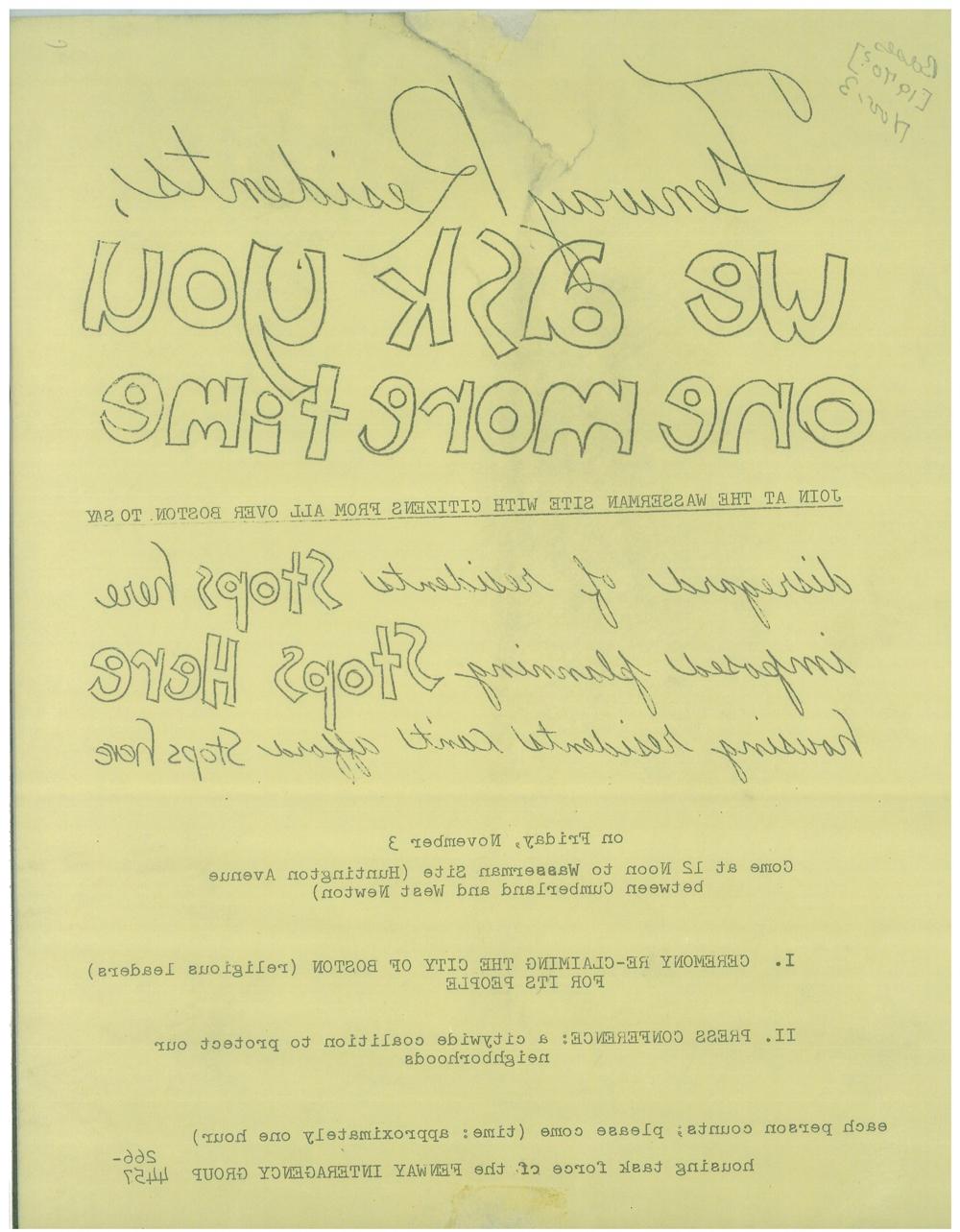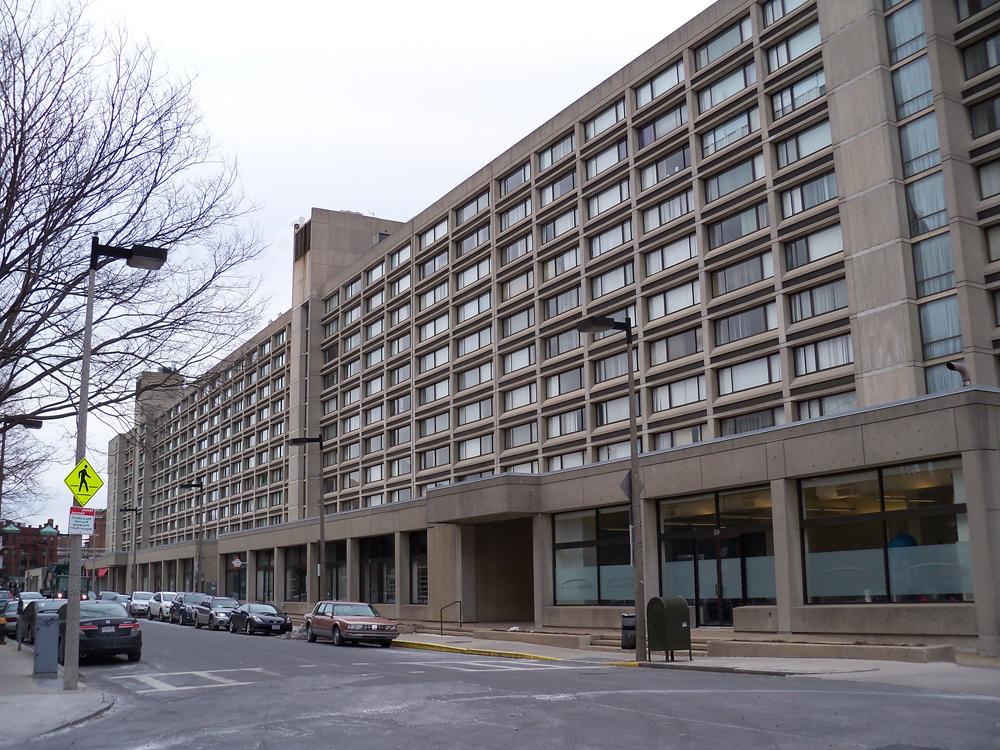By Anna J. Clutterbuck-Cook
My last post for the Beehive explored the creation, destruction, and potential renewal of Charlesgate Park in the Back Bay neighborhood of Boston. In my continued exploration of the Society’s 20th-century urban history collections, I stumbled across this handmade flyer from the early 1970s calling on residents of the Fenway to protest what they experienced as “imposed planning” in the then-struggling neighborhood.
“Fenway Residents, We Ask You One More Time” (Broadsides Collection, [1970] Nov. 3, MHS)
The gathering was organized by the housing task force of the Fenway Interagency Group (FIG), a loose coalition of grassroots social services organizations based in the Fenway neighborhood. What, exactly, were they protesting?
Though tentatively dated 1970, it is likely the flyer was distributed during the spring or summer of 1971, as the Christian Science Plaza was taking shape and the neighborhood around the plaza was filling with new development. A newspaper clipping dated April 1971 and preserved in a Boston Redevelopment Authority (BRA) scrapbook describes the construction in positive, neighborhood-friendly terms:
The first housing development is now under construction along the Church Center perimeter. This project, known as Church Park will be the largest apartment house in Boston. It is planned as a mixed use building with 526 units of housing plus parking and retailing. …In this low and middle income development, 25 percent of the units will go to low income families and the balance will go to middle income families at rents ranging from $110 to $360 per month.
The article goes on to describe the “Wasserman Site,” where the FIG flyer invites citizens to protest, as “320 units of middle income housing plus parking and retailing.” This official story stands in contrast to the flyer’s claims that the development represents “imposed planning,” a “disregard of residents,” and “housing residents can’t afford.”
Which story won the day? The Church Park building and what became Greenhouse Apartments were both constructed and remain standing today. Leasing at prices between $2500-$5000 per month, the units are now two or three times higher than the BRA considers the maximum affordable rent for median-income Boston residents.
Church Park from the intersection of Edgerly and Norway Streets (March 2014)
Over forty years after the FIG protest was held, economic inequality remains a central theme in Boston city politics, and the BRA role in neighborhood planning continues to prove controversial as Bostonians debate how to bring economic investment into the city without pushing lower-income residents and workers out of the urban core.



